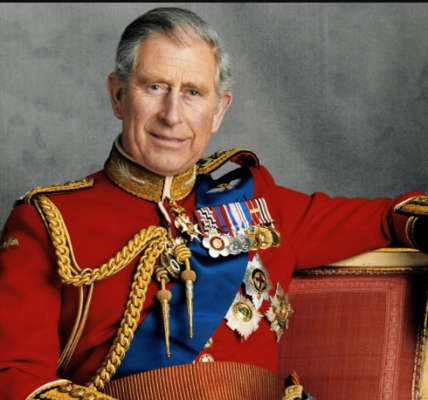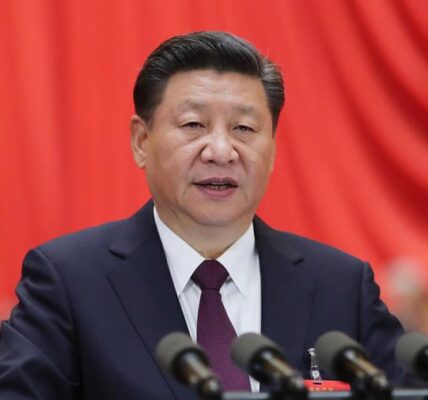Early Life and Education
Sheikh Hasina was born on September 28, 1947, into the Bengali Muslim Sheikh family of Tungipara, located in what was then East Bengal. Her father, Sheikh Mujibur Rahman, is a revered figure in Bangladesh, known as the founding father of the nation and its first President. Her mother, Sheikh Fazilatunnesa Mujib, played a significant supportive role in her father’s political career. Sheikh Hasina has Iraqi Arab ancestry through her paternal grandfather.
Growing up, Sheikh Hasina witnessed the intense political activism of her father, which often brought about dangerous situations for her family. Despite these challenges, she pursued her education diligently. She completed her early education at various institutions and eventually graduated from the University of Dhaka in 1973, after attending Eden Mohila College. Her involvement in student politics began during her university years, showcasing her early interest in political affairs.
Personal Life
In 1968, Sheikh Hasina married M.A. Wazed Miah, a distinguished nuclear physicist and writer, who later became the Chairman of the Bangladesh Atomic Energy Commission. The couple had two children: a son, Sajeeb Wazed, and a daughter, Saima Wazed. M.A. Wazed Miah passed away in 2009.

Tragic Loss and Exile
The political turmoil in Bangladesh reached a tragic peak on August 15, 1975, when Sheikh Mujibur Rahman and most of his family were assassinated during a military coup orchestrated by renegade officers of the Bangladesh Army. Sheikh Hasina and her sister, Sheikh Rehana, survived as they were in West Germany at the time with M.A. Wazed Miah, who was working as a nuclear physicist. Following the coup, Sheikh Hasina faced a long exile, initially moving to India where she was granted asylum. She lived in New Delhi from 1975 until her return to Bangladesh in 1981.
Return to Bangladesh and Political Ascent
Sheikh Hasina was elected President of the Awami League in February 1981 while still in exile. She returned to Bangladesh on May 17, 1981, amidst a tumultuous political landscape. Her leadership was pivotal in rejuvenating the Awami League and positioning it as a significant force in Bangladeshi politics. She became a symbol of resilience and determination for her party and supporters.
First Term as Prime Minister (1996-2001)
Sheikh Hasina’s first term as Prime Minister began in 1996 after the Awami League won the general elections. During this term, she became the first Prime Minister of Bangladesh to complete a full five-year term since the country’s independence. Her administration was marked by several key achievements, including the signing of a 30-year water-sharing treaty with India, governing the Ganges River. This agreement was a significant diplomatic success, addressing long-standing water resource disputes between the two nations.
Political Struggles and Second Term (2009-2014)
Sheikh Hasina faced significant political challenges after her first term, including electoral defeat and political violence. However, she remained a resilient figure in Bangladeshi politics. In 2008, she led the Awami League to a decisive victory in the general elections, forming a coalition government under the ‘Grand Alliance’ with the Jatiya Party. Her second term saw the establishment of the International Crimes Tribunal, which aimed to investigate and prosecute individuals involved in the 1971 Bangladesh Genocide. This move was widely regarded as a step towards justice for the atrocities committed during the country’s liberation war.
Third Term as Prime Minister (2014-2019)
Sheikh Hasina secured a third term as Prime Minister in the 2014 general elections. However, the elections were marred by controversy, with reports of violence and allegations of a crackdown on opposition parties. Despite these challenges, her administration focused on economic development, infrastructure projects, and social programs aimed at improving the lives of Bangladeshi citizens.
Fourth Term as Prime Minister (2019-2024)
In the 2019 general elections, the Awami League won 288 out of 300 parliamentary seats, securing Sheikh Hasina a fourth term as Prime Minister. This term saw continued economic growth and significant infrastructure developments, including the opening of the Padma Bridge, a major project aimed at boosting connectivity and economic activity in the country. However, her tenure was also marked by political tensions and criticisms regarding governance and human rights issues. Amid growing student protests and political unrest, Sheikh Hasina resigned from her position on August 5, 2024.
Legacy and Impact
Sheikh Hasina’s legacy is characterized by her resilience and determination in the face of adversity. As the longest-serving Prime Minister of Bangladesh and the world’s longest-serving elected female head of government as of September 5, 2022, her tenure has left a lasting impact on the country’s political and economic landscape. Her leadership has seen significant advancements in infrastructure, economic development, and social programs, as well as efforts to address historical injustices through the establishment of the International Crimes Tribunal.
Awards and Honors
Sheikh Hasina has received numerous awards and honors throughout her career, recognizing her contributions to politics, peace, and development. Some notable accolades include:
- 1998: Mother Teresa Award by All India Peace Council
- 1998: M.K. Gandhi Award by Mahatma M.K. Gandhi Foundation of Oslo, Norway
- 2000: The Pearl S. Buck Award
- 2014: UNESCO Peace Tree Award for her commitment to Women’s Empowerment and Girls’ Education
- 2009: Indira Gandhi Prize
- 2015: Recipient of the Lifetime Achievement Award
- 1999: Honorary Doctor of Law by the University of Dhaka
Conclusion
Sheikh Hasina’s journey from a politically active family to becoming a prominent leader in Bangladesh is a testament to her strength, resilience, and dedication. Her leadership has shaped the country’s modern history, and her contributions to its political and economic development will be remembered for years to come. Despite the controversies and challenges she faced, Sheikh Hasina’s legacy as a pioneering female leader and a champion of her nation’s progress remains significant.
requently Asked Questions about Sheikh Hasina
Q1: Who is Sheikh Hasina?
A: Sheikh Hasina is a prominent Bangladeshi politician who has served multiple terms as the Prime Minister of Bangladesh. She is the daughter of Sheikh Mujibur Rahman, the founding father and first President of Bangladesh. As of 2022, she is recognized as the world’s longest-serving elected female head of government.
Q2: When was Sheikh Hasina born?
A: Sheikh Hasina was born on September 28, 1947, in Tungipara, East Bengal (now Bangladesh).
Q3: What is Sheikh Hasina’s educational background?
A: Sheikh Hasina completed her education at various institutions, including Eden Mohila College. She graduated from the University of Dhaka in 1973.
Q4: How many terms has Sheikh Hasina served as Prime Minister of Bangladesh?
A: Sheikh Hasina has served four terms as Prime Minister: 1996-2001, 2009-2014, 2014-2019, and 2019-2024.
Q5: What significant treaties or agreements has Sheikh Hasina signed during her tenure?
A: One of the significant agreements Sheikh Hasina signed was the 30-year water-sharing treaty with India governing the Ganges River during her first term as Prime Minister.
Q6: What are some notable achievements of Sheikh Hasina’s government?
A: Notable achievements include the establishment of the International Crimes Tribunal to prosecute individuals involved in the 1971 Bangladesh Genocide, significant infrastructure projects like the Padma Bridge, and various social programs aimed at improving the lives of Bangladeshi citizens.
Q7: What personal challenges has Sheikh Hasina faced in her life?
A: Sheikh Hasina faced significant personal challenges, including the assassination of her father and most of her family members during a military coup in 1975. She lived in exile for several years before returning to Bangladesh in 1981.
Q8: Who was Sheikh Hasina’s husband?
A: Sheikh Hasina’s husband was M.A. Wazed Miah, a renowned nuclear physicist and writer who served as the Chairman of the Bangladesh Atomic Energy Commission. He passed away in 2009.
Q9: Does Sheikh Hasina have any children?
A: Yes, Sheikh Hasina has two children: a son, Sajeeb Wazed, and a daughter, Saima Wazed.
Q10: Why did Sheikh Hasina resign in 2024?
A: Sheikh Hasina resigned on August 5, 2024, amid student protests and political tensions in Bangladesh.
Q11: What awards has Sheikh Hasina received?
A: Sheikh Hasina has received numerous awards, including the Mother Teresa Award (1998), M.K. Gandhi Award (1998), The Pearl S. Buck Award (2000), UNESCO Peace Tree Award (2014), Indira Gandhi Prize (2009), and the Lifetime Achievement Award (2015), among others.
Q12: What is Sheikh Hasina’s legacy?
A: Sheikh Hasina’s legacy is characterized by her resilience, dedication to her country, significant advancements in infrastructure and economic development, and efforts to address historical injustices. She is celebrated as a pioneering female leader and a champion of Bangladesh’s progress.





